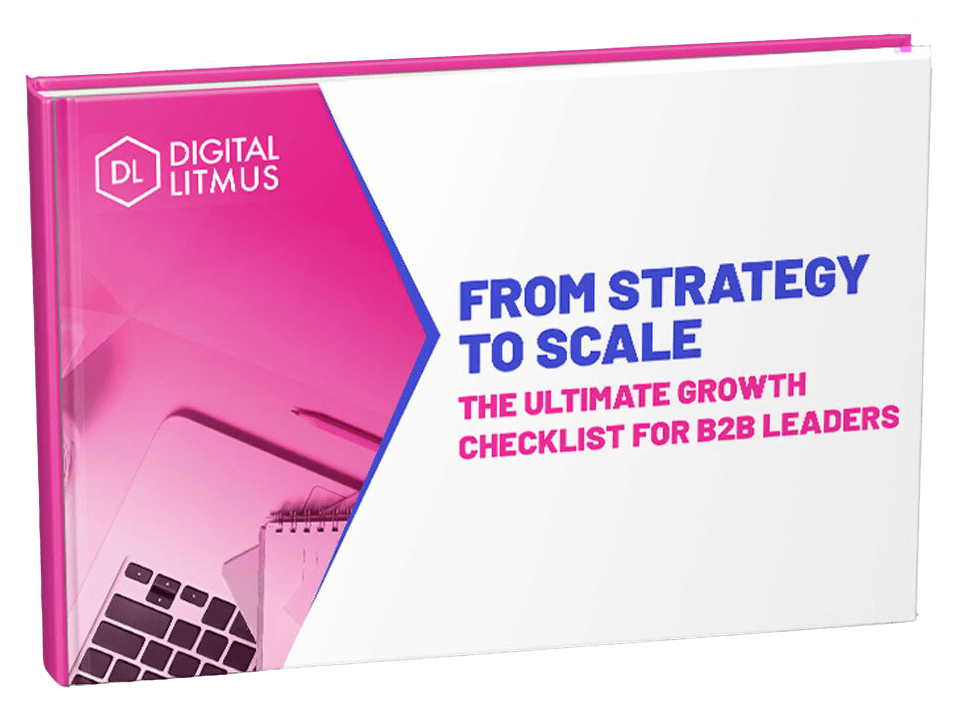In today’s fast-paced B2B environment, having the right tech stack is more than just a luxury – it’s a necessity. The tools you choose and how you integrate them can make or break your ability to scale effectively. That’s where Revenue Operations (RevOps) comes in. RevOps aligns your tech stack with your business processes, ensuring that everything runs smoothly, data flows seamlessly, and your teams can focus on what they do best – driving growth.
At Digital Litmus, we’ve seen first-hand how optimising your tech stack and RevOps can lead to increased efficiency, better customer experiences, and, ultimately, more revenue. In this blog, I’ll walk you through the essential components of a well-structured tech stack and how RevOps can supercharge your business growth.
Building an Integrated Tech Stack: The Backbone of Your Business
Your tech stack is the foundation upon which your business operations rest. It’s not just about having the right tools – it’s about ensuring that those tools work together seamlessly. A well-integrated tech stack allows for smooth data flow across departments, which is critical for making informed decisions and streamlining operations.
Start by assessing your current tools. Are there gaps in your tech stack that could be slowing you down? Perhaps your CRM doesn’t integrate well with your marketing automation platform, or your analytics tools don’t provide the insights you need. Choosing platforms with robust integration capabilities is key to avoiding these roadblocks. As your business grows, regularly review and optimise your tech stack to ensure it continues to meet your evolving needs.
The goal is to create a unified system where all your marketing, sales, and customer service tools are connected, providing a comprehensive view of your operations and allowing your teams to work more efficiently.
Ensuring a Single View of the Customer: Data Integration Done Right
In B2B, understanding your customers is everything. A single view of the customer – where data from multiple touchpoints is consolidated into one comprehensive profile – allows you to deliver personalised experiences that drive satisfaction and loyalty. But achieving this single view requires alignment across all departments, from marketing and sales to customer service.
Using a centralised CRM is essential for managing and accessing customer data. Your CRM should act as the hub where all customer interactions are recorded and easily accessible by everyone who needs them. But it’s not just about having the right tools – it’s about data governance. Establishing clear policies around data quality and security ensures that your customer information is accurate, up-to-date, and protected.
By aligning data across departments and ensuring that everyone has access to the same customer profiles, you can provide more personalised experiences and improve overall customer satisfaction.
Lead Nurturing and Automation: Streamlining Engagement
Lead nurturing is a critical part of guiding prospects through the buyer journey, and marketing automation tools can make this process much more efficient. Automation allows you to deliver timely, personalised content to your audience without the manual effort, ensuring that your leads stay engaged and move smoothly through the funnel.
Start by segmenting your audience based on their needs and behaviours. This allows you to tailor your nurturing strategies to different groups, ensuring that each lead receives content that resonates with them. Use marketing automation to deliver this content at the right time, whether it’s an email drip campaign or targeted ads.
But automation isn’t a set-it-and-forget-it solution. Continuously monitor your lead nurturing campaigns and make adjustments based on performance data. The goal is to keep your leads engaged and moving towards conversion.
Customer Lifecycle Management: Enhancing Retention and Loyalty
Once you’ve acquired a customer, your focus should shift to keeping them. That’s where customer lifecycle management (CLM) comes into play. CLM is all about managing the customer experience from onboarding through renewal, ensuring that they continue to find value in your offerings and stay loyal to your brand.
A structured onboarding process sets the tone for the customer relationship. Make sure your customers have everything they need to succeed from the start, and proactively manage their journey to ensure they remain engaged. Using your CRM to track interactions and ensure personalised follow-ups can make a big difference in retention rates.
Managing the renewal process is also critical. Proactively reaching out to customers before their contracts expire, addressing any concerns they may have, and offering additional value can help reduce churn and increase customer lifetime value (CLV).
Funnel Reporting: Gaining Visibility into Your Sales Process
Funnel reporting provides crucial insights into how leads move through your sales process. By tracking and analysing lead progression, you can identify bottlenecks that might be slowing down your sales and optimise your strategies accordingly. Without this visibility, it’s difficult to know where improvements are needed.
Start by clearly defining the stages of your sales and marketing funnel. Then, use your CRM and analytics tools to track how leads progress through each stage. This will allow you to visualise your funnel and spot areas where leads are getting stuck or dropping off.
Regularly reviewing your funnel data ensures that you can make informed decisions about where to focus your efforts and how to adjust your strategy to drive better results.
Lead Scoring and Attribution: Optimising Sales Efforts
Lead scoring helps you prioritise high-quality leads, while attribution helps you understand which marketing efforts are driving conversions. Both processes are essential for optimising your sales and marketing efforts and improving ROI.
Define clear criteria for scoring leads based on factors like engagement, demographics, and behaviour. Using marketing automation tools, you can calculate and update lead scores in real-time, ensuring that your sales team focuses on the leads most likely to convert.
Attribution models allow you to track the effectiveness of your marketing channels, helping you understand which campaigns are contributing the most to your bottom line. This insight enables you to allocate resources more effectively and improve the overall efficiency of your sales and marketing operations.
Conclusion: Optimising Your Tech Stack and RevOps for Growth
A well-optimised tech stack and effective RevOps are critical for driving sustained growth in B2B businesses. By building an integrated tech stack, ensuring a single view of the customer, leveraging automation, and focusing on lifecycle management, you can streamline operations, improve customer experience, and ultimately drive revenue growth.
Now’s the time to assess your current operations. Are your tools working together seamlessly? Are you getting the most out of your RevOps efforts? If not, it might be time for a tech stack audit and optimisation.
Ready to optimise your tech stack for growth? Reach out to Digital Litmus for a RevOps audit.

Are you a B2B company looking to accelerate growth?
Our connected sales, marketing, and HubSpot agency services might be just the ticket. Get in touch for your free growth assessment to find out how you can accelerate business growth today.





